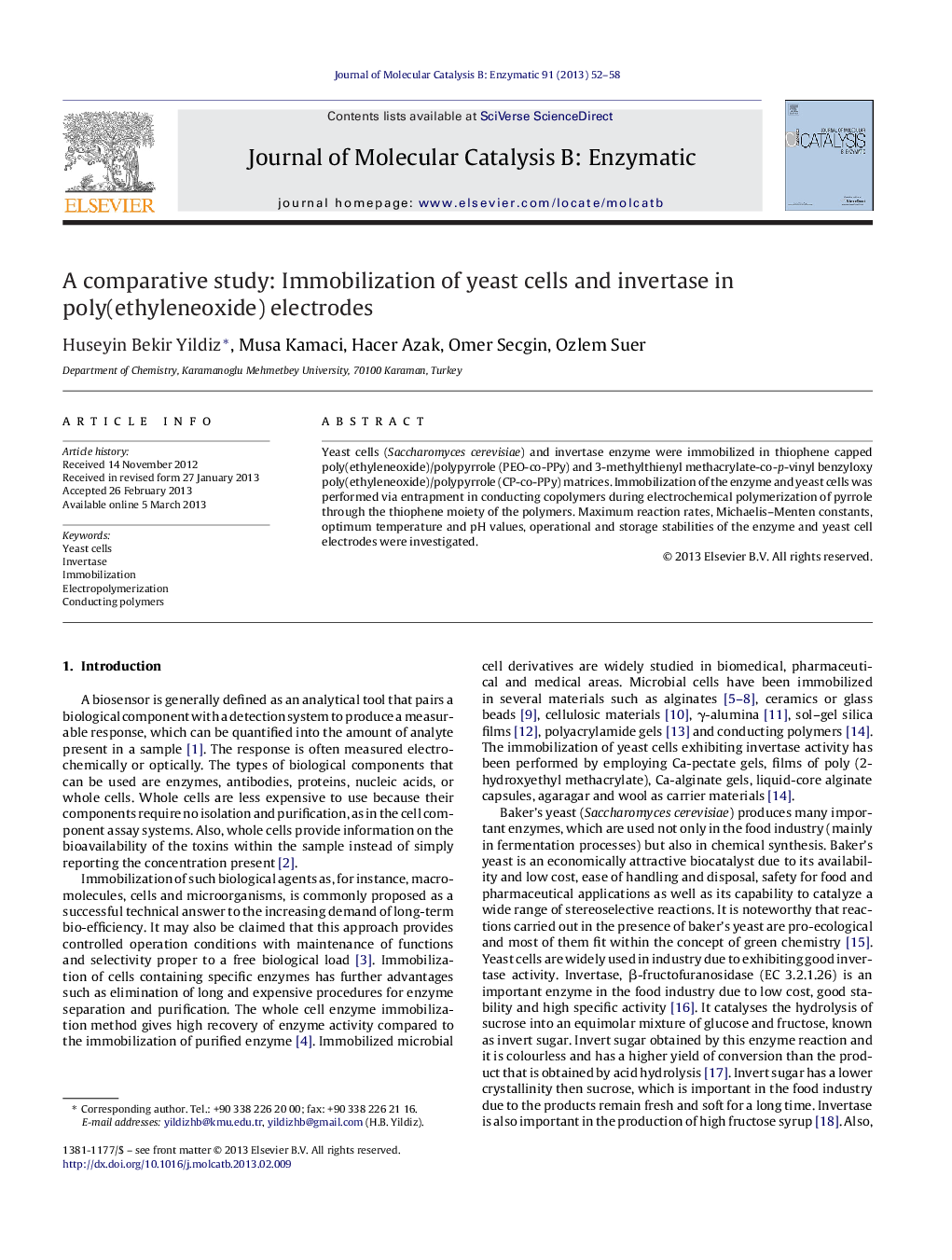| Article ID | Journal | Published Year | Pages | File Type |
|---|---|---|---|---|
| 69919 | Journal of Molecular Catalysis B: Enzymatic | 2013 | 7 Pages |
Yeast cells (Saccharomyces cerevisiae) and invertase enzyme were immobilized in thiophene capped poly(ethyleneoxide)/polypyrrole (PEO-co-PPy) and 3-methylthienyl methacrylate-co-p-vinyl benzyloxy poly(ethyleneoxide)/polypyrrole (CP-co-PPy) matrices. Immobilization of the enzyme and yeast cells was performed via entrapment in conducting copolymers during electrochemical polymerization of pyrrole through the thiophene moiety of the polymers. Maximum reaction rates, Michaelis–Menten constants, optimum temperature and pH values, operational and storage stabilities of the enzyme and yeast cell electrodes were investigated.
Graphical abstractYeast cells (Saccharomyces cerevisiae) and invertase enzyme were immobilized in thiophene capped poly(ethyleneoxide)/polypyrrole (PEO-co-PPy) and 3-methylthienyl methacrylate-co-p-vinyl benzyloxy poly(ethyleneoxide)/polypyrrole (CP-co-PPy) matrices. Maximum reaction rates, Michaelis–Menten constants, optimum temperature and pH values, operational and storage stabilities of the enzyme and yeast cell electrodes were investigated.Figure optionsDownload full-size imageDownload as PowerPoint slideHighlights► Yeast cells and invertase were successfully immobilized in conducting polymers. ► The cell system showed comparable kinetic data with that of the invertase. ► The cell system had parallel temperature and pH stabilities with these of invertase. ► The immobilized cells showed good storage and operational stabilities. ► The whole cells can be entrapped instead of the more expensive purified enzymes.
